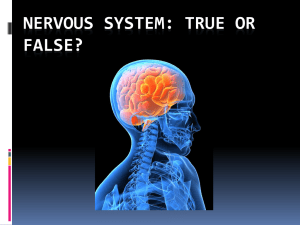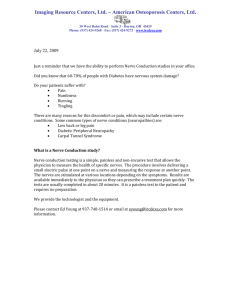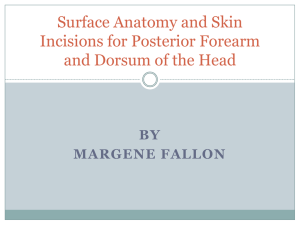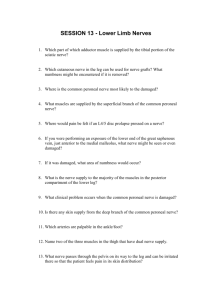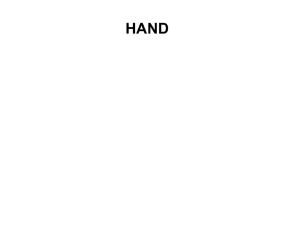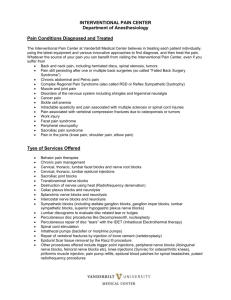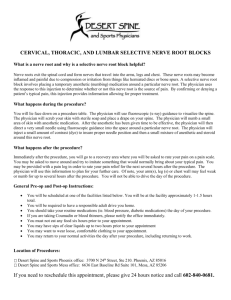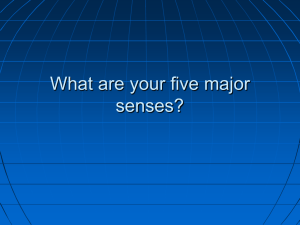Book Wrist and Hand Review
advertisement
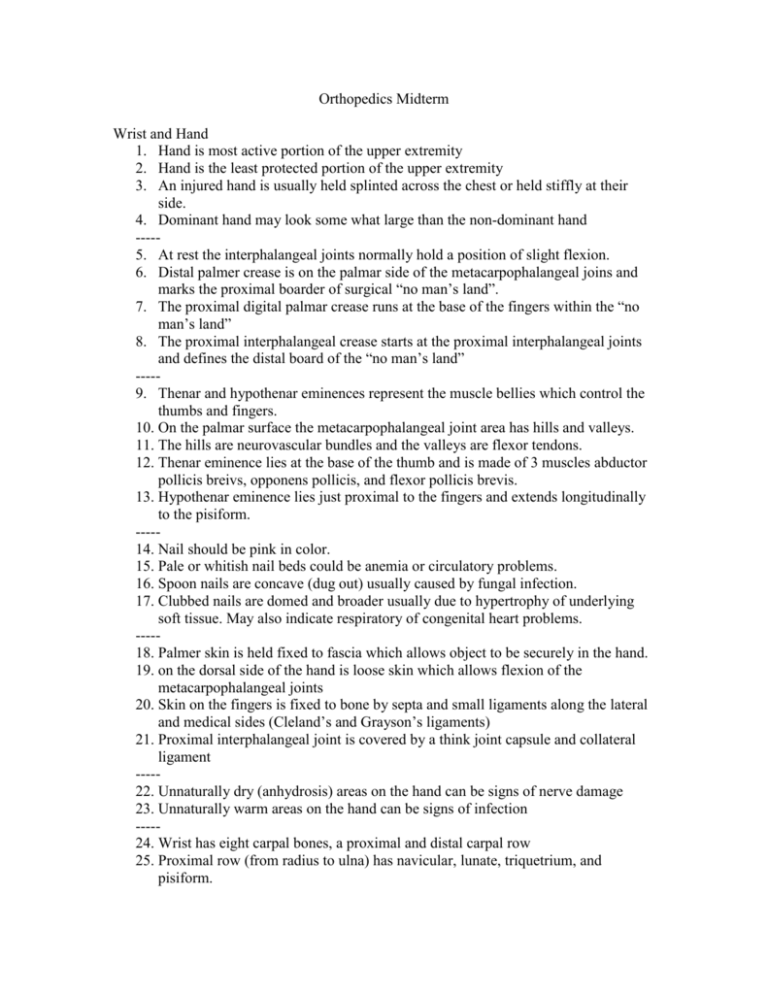
Orthopedics Midterm Wrist and Hand 1. Hand is most active portion of the upper extremity 2. Hand is the least protected portion of the upper extremity 3. An injured hand is usually held splinted across the chest or held stiffly at their side. 4. Dominant hand may look some what large than the non-dominant hand ----5. At rest the interphalangeal joints normally hold a position of slight flexion. 6. Distal palmer crease is on the palmar side of the metacarpophalangeal joins and marks the proximal boarder of surgical “no man’s land”. 7. The proximal digital palmar crease runs at the base of the fingers within the “no man’s land” 8. The proximal interphalangeal crease starts at the proximal interphalangeal joints and defines the distal board of the “no man’s land” ----9. Thenar and hypothenar eminences represent the muscle bellies which control the thumbs and fingers. 10. On the palmar surface the metacarpophalangeal joint area has hills and valleys. 11. The hills are neurovascular bundles and the valleys are flexor tendons. 12. Thenar eminence lies at the base of the thumb and is made of 3 muscles abductor pollicis breivs, opponens pollicis, and flexor pollicis brevis. 13. Hypothenar eminence lies just proximal to the fingers and extends longitudinally to the pisiform. ----14. Nail should be pink in color. 15. Pale or whitish nail beds could be anemia or circulatory problems. 16. Spoon nails are concave (dug out) usually caused by fungal infection. 17. Clubbed nails are domed and broader usually due to hypertrophy of underlying soft tissue. May also indicate respiratory of congenital heart problems. ----18. Palmer skin is held fixed to fascia which allows object to be securely in the hand. 19. on the dorsal side of the hand is loose skin which allows flexion of the metacarpophalangeal joints 20. Skin on the fingers is fixed to bone by septa and small ligaments along the lateral and medical sides (Cleland’s and Grayson’s ligaments) 21. Proximal interphalangeal joint is covered by a think joint capsule and collateral ligament ----22. Unnaturally dry (anhydrosis) areas on the hand can be signs of nerve damage 23. Unnaturally warm areas on the hand can be signs of infection ----24. Wrist has eight carpal bones, a proximal and distal carpal row 25. Proximal row (from radius to ulna) has navicular, lunate, triquetrium, and pisiform. 26. Distal row has trapezium, trapezoid, capitate, and hamate 27. Some Lover Try Positions That They Can’t Handel 28. Navicular aka scaphoid 29. Navicular is the floor of the snuffbox and the largest bone in the proximal row 30. Navicular is most commonly fractured 31. Trapezium’s articulation is saddle like ----32. Dupuytren’s Contracture – flexion deformity of the fingers cause by palmar aponeurosis 33. Swan-neck deformity – fingers contain no muscle bellies and are motored by flexor and extensor tendons only. May be cause by rheumatoid arthritis 34. Herberden’s node - body nodes on the dorsal side of the distal interphalangeal joint. May be caused by osteoarthritis 35. Mallet finger – inability to extend distal interphalangeal joint. May be tender 36. felon – an infection of the finger tufts 37. Kanavel – infections of finger tufts that travels along the tendon sheaths 38. 4 signs of Kanavel a. fingers held in flexion b. uniform swelling of fingers c. intense pain upon passive extension of fingers d. sensitivity upon palpation along course of tendon sheaths ----39. Ulnar deviation is about 30 degrees 40. Radial deviation is about 20 degrees 41. Opposition of the thumb – touch thumb and pinky finger together. 42. Normally fingers can hyperextend beyond their active range of motion 43. Metacarpophalangeal joints can move a few degrees laterally when extended. b/c the collateral ligaments of the metacarpal joints are slacked in extension and tight in flexion 44. There is no motion in the metacarpophalangeal joints when they are flexed ----45. Wrist extension – C6 Muscles: extensor carpi radials longus, brevis, and extensor carpi ulnaris Nerve Intervention: radial nerve 46. Wrist flexion – C7 Muscles: flexor carpi radials, and flexor carpi ulnaris Nerve Intervention: median nerve, ulnar nerve 47. Finger extension – C7 Muscles: extensor digitorum communis, extendor indicis, extensor digiti minimi Nerve Intervention: radial nerve 48. Finger flexion – C8 Muscles: flexor digitorum profundis, flexor digitorum superficialis, medial two lumbicals, lateral two lumbicals Nerve Intervention: ulnar nerve, anterior interosseous branch of median nerve, median nerve 49. Finger abduction – T1 Muscles: doral interosssi, abductor digiti minimi Nerve Intervention: ulnar nerve 50. Finger adduction – T1 Muscles: extensor palmar interossei Nerve Intervention: ulnar nerve 51. Thumb extension Muscles: extensor pollicis brevis, extensor pollicis longus Nerve Intervention: radial nerve 52. Thumb flexion (transpalmar abduction) Muscles: flexor pollicis brevis, flexor pollicis longus Nerve Intervention: ulnar nerve, median nerve ----53. Radial nerve supplies – dorsal side of hand from wrist to thumb, 1st-3rd finger (lateral part of 3rd) 54. Ulnar nerve supplies – dorsal side of hand from wrist to 4th finger and medial part of 3rd 55. Ulnar nerve supplies – ventral side of hand from wrist to 4th finger and medial part of 3rd 56. Median nerve supplies – ventral side of hand from wrist to thumb, 1st-3rd finger (lateral part of 3rd) 57. C6 nerve root – thumb and 1st finger 58. C7 nerve root – middle finger 59. C8 nerve root – 3rd and 4th finger ----60. Retinacular test 61. Allen test
